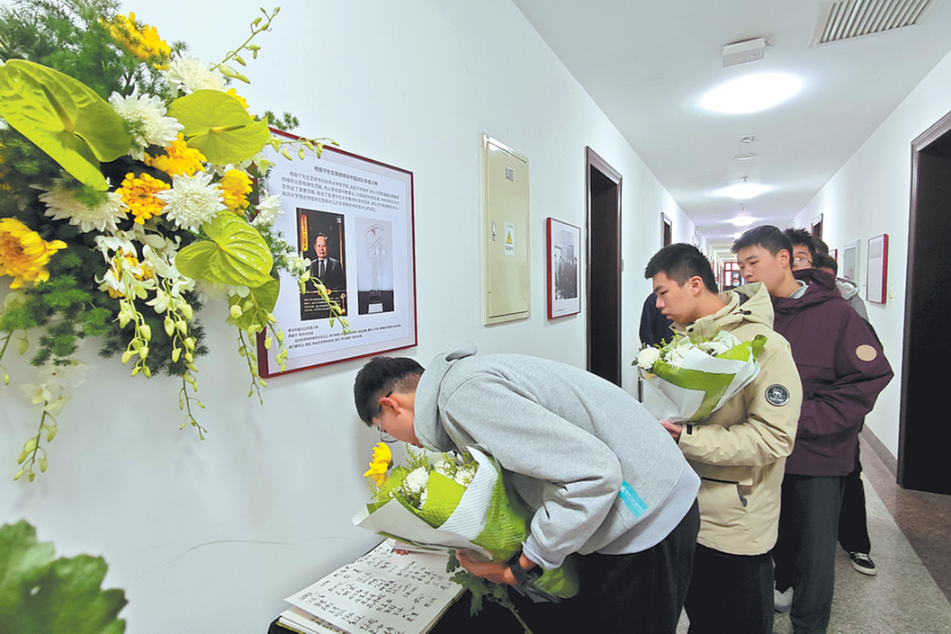Gerontech can help address aging problem


Population aging is a megatrend affecting every country in the world. Demographically, population aging tends to not only mean more elderly people in absolute terms, but also relative to the younger and middle-aged population. Although this came about through positive developments — lower fertility and mortality rates — there is a general feeling of unease about its consequences.
There is no doubt that population aging creates significant challenges in terms of the pressures that it places on social systems. In countries with established welfare systems, redistributive pensions which suddenly have many people taking money out and fewer people putting money in clearly have problems unless something else changes. The same principles apply to other social systems which are sensitive to a population's age structure, such as healthcare, long-term care and even housing supply. In lower- and middle-income countries, having the capacity to set up these necessary healthcare and social systems in the face of often rapidly aging populations will be one of the greatest challenges of this century.
More broadly, economists argue that population aging can be a drag on productivity and economic growth. This, they argue, is due to not only a shrinking labor force, but also the declining population of younger people, rendering the workforce less dynamic and innovative.
Linked to the issues around the necessary increase in budgets for care is the challenge of finding people to work in the care sector. Now, there is a huge demand for such people, which will only increase over the next years. However, there is little appetite to work in the sector, especially among the younger people. Therefore, much of the care work now primarily falls on the shoulders of underpaid (and often unpaid), under-recognized women workers.
How best to respond to this situation? Simply having more babies is not a solution to these problems, simply because a newborn today will not enter the labor market until the 2040s, by which time many of these challenges will have reached a critical point.
The most immediate and necessary response is to either fairly reform the institutions which are under stress, or start to build sustainable ones where these do not already exist. This means taking politically difficult decisions on pension and welfare reform, but also on taxation. These decisions, which in many countries have been put off for decades, will be needed to ensure our social systems are put back on a sustainable footing and are fit to address the challenge.
However, it does not all need to be doom and gloom.
Throughout history, challenges have been spurs to innovation. This is perhaps most recently the case with climate change. Population aging can, and should, be such a catalyst to technological development. In terms of industrial production and the service sector, there is no doubt technology (including artificial intelligence) can boost productivity when properly applied. This can play a key role in offsetting the loss in demographic dividends which the labor force will inevitably see over the next few decades.
Arguably, though, these technological developments can have just as big an impact on the elderly people. Across the world we see the development of "gerontechnology": an interdisciplinary field linking existing and developing technologies to the aspirations and needs of the elderly people. This concept supports "successful aging" in response to emerging new technologies in the context of population aging. The popular image of "gerontech" may be a smiling, human-like caregiving robot.
However, much of gerontech is actually far simpler and more prosaic. In terms of diagnostics, for example, wearables to measure the gait of the elderly people with dementia, or assistive technology at home and in the community such as tracking devices to reunite persons with dementia who have "wandered" with their caregivers. Advances in 3D printing have transformed food options for persons with dysphagia, or those who have trouble swallowing, by presenting soft food in a more visually appealing way.
There is little doubt that the rapidly shifting frontiers in AI have the potential to supercharge these recent developments in gerontech. To take just one example: "robopets" have been shown to be effective in comforting behavioral and psychological symptoms of dementia, while "social robots" have been effective for people with depression — and in treating loneliness. Improvements in generative AI will only render such "social robots" more effective in the future.
Gerontech may also be a means to attracting an increasing number of younger people to work in the care sector. But again this is not a magic solution. This needs to be matched with better pay and conditions.
Studies have shown there are major issues with the wide-scale adoption of gerontech. Apart from costs and potential product malfunction, other potential issues include the de-personalization of care through algorithm-based standardization, discrimination of minority groups through generalization, and dehumanization of the care relationship through automatization.
The gaps in both digital literacy and access to online services also limit the current potential of digital services. So, to ensure technology succeeds, much needs to be done on the "softer" issues such as ethics, access and costs. Critically, gerontech needs to be co-created to help the elderly people meet their needs and expectations.
Technology will never, and should never, completely replace the human touch when it comes to care. However, it can certainly play a key role in supporting care-givers and the elderly people to ensure that we all age better.
The author is a professor of social science and public policy at the Hong Kong University of Science and Technology.
The views don't necessarily reflect those of China Daily.
If you have a specific expertise, or would like to share your thought about our stories, then send us your writings at opinion@chinadaily.com.cn, and comment@chinadaily.com.cn.


































